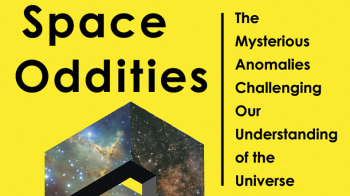The Ideas of Particle Physics, fourth edition, by J E Dodd and B Gripaios, Cambridge University Press

When it was first published in 1984, James E Dodd’s The Ideas of Particle Physics used very little maths, but was full of clear and concise explanations – a strong contrast with the few other reference books that were available at the time. The first edition was written prior to the start of LEP, just after the discovery of the W and Z bosons. The fourth edition, published in 2021, brings it up to date while keeping its signature style.
At the time of my PhD, 30 years ago, Dodd’s book was revolutionary and helped me enormously. Over the years I have recommended it to countless students, to complement lectures and internet resources. But I had not looked at the updated versions until now. In keeping with the original, the new edition states explicitly that it is not a textbook: it contains no mathematical derivations, and no complicated formulae are written down. This is not at all to say that it is an easy read – it is not! But Dodd and Ben Gripaios, who joins the original author for this expanded fourth edition, convey the beauty of fundamental physics, and some of the phrases border on poetic: “Viewed picturesquely, it is as if the world of physical reality conducts itself while hovering over an unseen sea of negative-energy electrons.”
Some of the phrases border on poetic
The second half of the updated book follows on from where the first edition left off. Precision measurements at LEP and the discovery of the gauge bosons and the top quark are all described with the same excitement and eye for beauty as the earlier discoveries. However, the LHC receives fewer words than the World Wide Web, with its almost five-decades-long journey reduced to a couple of milestones. The hunt for the Higgs boson is also glossed over and fails to capture the excitement of the past couple of decades. More problematically, the description of the role the Higgs boson plays in spontaneous symmetry breaking is muddled.
The latter chapters redeem the text by detailing many of the theories that have arisen over the past 30 to 40 years, and how they may address the many remaining questions in fundamental physics. Indeed, while the first edition perhaps gave the impression that there was not much more to learn about the universe, the fourth edition shows how little we understand, and gives good pointers to where we may find answers.
As a tome on the evolutionary nature of particle physics, with concepts rather than mathematics at the forefront, The Ideas of Particle Physics remains an excellent book, predominantly aimed at graduate students, as a complement to courses and other reference works.








